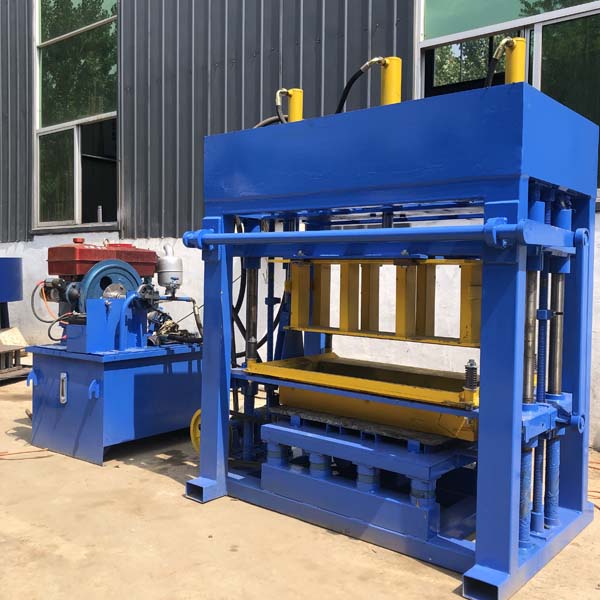
Image source:Aiwei block machine
Introduction
Chinese brick making machine manufacturers have played a significant role in revolutionizing the construction industry with their innovative technologies and solutions. However, like any industry, they face unique challenges that impact their operations and growth. This article aims to shed light on the challenges faced by Chinese brick making machine manufacturers, exploring the key issues and their implications for the industry. Understanding these challenges is essential for developing strategies to overcome them and foster a thriving manufacturing sector.
Intense Market Competition
The brick making machine industry in China is highly competitive, with numerous manufacturers vying for market share. This intense competition creates challenges for manufacturers, including price pressures and the need to continuously innovate to stay ahead. Smaller manufacturers, in particular, struggle to compete with larger, more established companies, as they often lack the resources and brand recognition necessary to gain a significant market share.
To overcome this challenge, Chinese brick making machine manufacturers must focus on differentiating their products through quality, technological advancements, and superior customer service. Emphasizing value-added features and establishing strong customer relationships can help manufacturers stand out in a crowded market.
Technological Advancements and Innovation
Rapid technological advancements present both opportunities and challenges for brick making machine manufacturers. On one hand, innovation drives the industry forward, enabling manufacturers to develop more efficient and advanced machines. On the other hand, keeping up with evolving technologies requires substantial investments in research and development (R&D), which may strain the resources of smaller manufacturers.
To address this challenge, Chinese manufacturers must prioritize R&D efforts to develop cutting-edge technologies that enhance machine performance, increase automation, and improve energy efficiency. Collaborations with research institutions and partnerships with technology providers can also help manufacturers access the latest advancements in the field.
- Intellectual Property Rights Protection
Intellectual property rights (IPR) protection is a significant challenge faced by Chinese brick making machine manufacturers. Some manufacturers struggle with issues such as counterfeit products, patent infringements, and unauthorized copying of their machine designs. This not only affects their profitability but also undermines their ability to invest in R&D and innovation.
To address this challenge, manufacturers should prioritize IPR protection by registering patents and trademarks and actively monitoring the market for any infringements. Collaborating with legal experts and industry associations can help manufacturers navigate the complex landscape of IPR protection and take appropriate legal actions against violators.
Environmental Regulations and Compliance
China has been actively implementing stricter environmental regulations to address pollution and promote sustainable development. These regulations impact brick making machine manufacturers, as they need to ensure their machines meet environmental standards and emission requirements. Failure to comply with these regulations can result in fines, production disruptions, and damage to a manufacturer’s reputation.
To tackle this challenge, Chinese manufacturers should invest in eco-friendly technologies, such as energy-efficient motors and emission control systems, to reduce the environmental impact of their machines. They should also stay updated on changing regulations and proactively incorporate environmentally friendly practices into their manufacturing processes.
Skilled Workforce and Talent Retention
The success of brick making machine manufacturers relies on skilled and knowledgeable employees. However, attracting and retaining skilled talent is a significant challenge for Chinese manufacturers. Rapid industrialization and urbanization have increased demand for skilled workers, creating a competitive labor market. Additionally, there is a generation gap, with experienced workers approaching retirement and a shortage of younger workers with the necessary technical expertise.
To address this challenge, manufacturers can invest in training programs and apprenticeships to develop a skilled workforce. Collaborations with vocational schools and universities can help bridge the skills gap and ensure a pipeline of talented individuals. Moreover, manufacturers should prioritize employee retention by offering competitive wages, career development opportunities, and a positive work environment.
Global Economic Factors and Trade Policies
Chinese brick making machine manufacturers are affected by global economic factors and trade policies. Fluctuating exchange rates, trade disputes, and protectionist measures imposed by certain countries can impact export volumes and profitability. Tariffs and import restrictions can also create barriers to accessing international markets.
To mitigate these challenges, manufacturers can diversify their export markets and explore opportunities in emerging economies. Developing strong relationships with overseas distributors and participating in international trade fairs and exhibitions can help expand their global reach. Furthermore, manufacturers should stay informed about trade policies and adjust their strategies accordingly to navigate the dynamic international trade landscape.
Conclusion
Chinese brick making machine manufacturers face a range of challenges that impact their competitiveness and growth. Intense market competition, technological advancements, IPR protection, environmental compliance, skilled workforce retention, and global economic factors are among the key challenges they confront. By addressing these challenges, manufacturers can foster innovation, improve product quality, and strengthen their position in the global market.
To overcome these challenges, Chinese manufacturers must embrace continuous innovation, invest in R&D, protect their intellectual property rights, comply with environmental regulations, prioritize workforce development, and adapt to changing global trade dynamics. By proactively addressing these challenges, Chinese brick making machine manufacturers can enhance their resilience, competitiveness, and contribute to the sustainable development of the industry.
